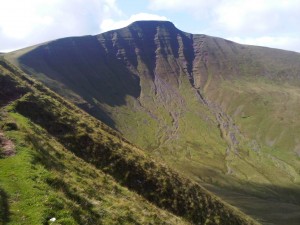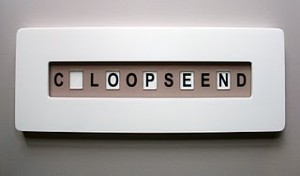This is just a list of things I want you to like as much as I do. Expect me to change my mind.
Fiction
I love the line, towards the end of To Kill a Mockingbird: ‘As I made my way home, I thought Jem and I would get grown but there wasn’t much else left for us to learn, except possible algebra.’ It’s almost as good as the description of Mr Alan Taylor in Mr Gum and the Biscuit Billionaire as ‘a gingerbread man with electric muscles’.
I have favourite books: Calvino’s Mr Palomar, Woolf’s To the Lighthouse and Joyce’s Ulysses, but I wouldn’t necessarily recommend them. They were right for me at the time. Ali Smith’s How to be both is a stunning novel – it manages to experiment with the form but is perceptive, beautiful, playful and very funny. Michel Faber’s The Book of Strange New Things is a subtle, beautiful and precisely observed novel. Beneath the quiet narrative there’s an existential horror that’s close to being unbearable, an overwhelming sense of the fragility of everything.
Karl Ove’s Knausgaard’s A Death in the Family is one of the most compulsive books I’ve read. Nothing happens: there’s no plot, nothing of any consequence. It records a very ordinary life. But that’s its power. It somehow manages to make the dull ordinariness of things sparkle like the sun on shallow water.
Non-Fiction
Books I’d urge all teachers and perhaps more importantly, education ministers, to read, are: G for Genes by Kathryn Asbury and Robert Plomin, a powerful case for appreciating the role of genes in educational performance; Guy Claxton’s Hare Brain, Tortoise Mind, which reveals that the mind is more absorbent, more elastic when it is not stressed, tested, questioned, or rebuked. Finally, Iain McGilchrist’s The Master and His Emissary describes a culture dominated by a mode of thinking in which representations of reality become more important than reality itself. Thus, for example, data is considered more reliable than immediate experience.
Poetry
I’m a bit obsessed with Don Paterson’s collection Rain.
Music
I’ve been playing a lot of Bach recently – especially Sonatas and Partitas performed by Rachel Podger. I’m also going through a phase of listening to Byrd and Tallis and have just discovered the work of a contemporary of Tallis, John Sheppard. But I love just about everything, although my Desert Island Discs would have to include David Bowie, The Fall, Van der Graaf Generator, Sufjan Stevens, Mozart and Wagner’s prelude to Tristan and Isolde.
Jokes
I like the one about the polar bear going into a pub and asking for a packet of crisps. It doesn’t work so well written down.
Mountains
One mountain: Pen y Fan, the highest peak in south Wales. This is a photo I took balanced precariously on the side of a very steep and extremely dangerous mountain. So dangerous that if my foot slipped, I would be cast to the winds, thrown into the void. Or I would have lost my sandwiches, at least.
Film
Herzog’s Heart of Glass. Brilliant, beautiful and bonkers.
Science
I like Karl Popper’s Theory of Falsifiability. That theories can only be proved false, not true. Truth is, therefore, just a collection of theories. Steven Pinker’s The Stuff of Thought is astonishing.
Education
Education should be free from political interference. That’s it.
History
I could go on and on and on about the French Revolution. Weave in Wordsworth and Rousseau and it becomes a moment when the written word and ideas forge a new era. It was the tsunami at the far end of the enlightenment, and an utter catastrophe, when, in the name of virtue, human beings unleashed unparalleled horrors upon each other.
I’m currently obsessed with ancient history, particularly the development of the city states of ancient Greece. Tom Holland’s Persian Fire is responsible for this.
Buildings and Structures
The Elan Valley Dams, and the seventy mile pipeline that takes water from mid Wales to Birmingham is a feat of engineering of extraordinary vision. I don’t think I could even begin to understand how it was achieved. It’s on the scale of the Moon landings, except with social good at its heart.
Art
Marcel Duchamp was an artist who didn’t produce that much art.
I loved Tom Phillip’s CLOOPSEEND:
A few years ago I wrote to Tom Phillips about his work CLOOPSEEND. I told him I thought it one of the most important art works of all time. He offered to sell me one at a vastly reduced price, as long as I went to his house to pick it up. I did. He was lovely. Here it is, on my wall.
The Alchemy of Coffee
I love the ritual of making coffee. I use a stove top pot, an aluminium moka, and love its compact design, its octagonal base. I get a sensuous thrill from grinding beans, then spooning the coffee into the pot’s funnel, screwing on the top tightly (which nearly always fails to stop it leaking) then placing it on a low heat, and waiting. Waiting for something good is bliss. I like to sit and read, and think of the pot heating slowly, the pressure building, then at some point the boiling water forced up through the grounds and into the collecting chamber. Occasionally I lift the lid of the pot to watch the coffee seep from the chimney, slithering down into the collecting chamber. It’s like a tiny industrial plant, or a dark alchemy. And for those last few seconds, the point at which it should be removed from the heat, that volcanic, intestinal gurgle.
I’ve had several of these pots over the years, and each one has failed to work properly. There’s a rubber seal, a sort of gasket, at the point where the top half of the pot screws to the lower chamber, the vessel into which cold water is initially poured. The seal rarely works and so from the join between top half and bottom there oozes thick, black oily coffee. It’s quite lovely, though, and as I have an electric cooker, I have to dab the side of the pot with a cloth to prevent the ooze from pooling on the hob. Once it settles and cools it has to be scrubbed off, and it takes some effort to clear it up. Better to dab the pot like a child’s grazed knee, muttering ‘there, there’ as the liquid seeps out than let it dribble on to the hob. But this is just the first part of the production. I drink it as espresso only rarely; it takes so long to brew, I don’t want it gone in a couple of sips. So I make a sort of macchiato, (technically I think, it’s a cortado) by spooning hot milk into an espresso cup, before pouring the coffee. The milk has to be just so. Then I turn off the heat, and pour the ribbon of tar into the cup of milk, Then, before sipping, I have to begin work. If someone calls, or texts, at that point, I will ignore them. I have to sit at my computer and once I’ve taken that first sip, set about forcing words on to the page.

